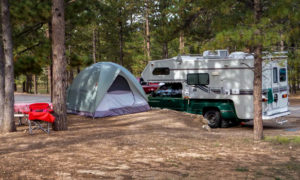
The Importance Of Tire And Wheel Balancing
To get optimum tire performance from your RV tires, the weight of the tire and wheel assembly must be distributed uniformly around the tire’s circumference. Out-of-balance tires tend to cup and wear excessively at the heavy spot. You should have wheel balancing performed when:
* New or used tires are mounted on wheels.
* A tire and wheel are moved to another position.
* After a flat repair.
Tire Rotation Patterns
Every motor home and trailer is unique, so consult your owner’s manual for rotation recommendations for your vehicle. If the tires on your vehicle show uneven wear, ask your tire professional for advice.
Wheel Alignment
Proper wheel alignment is essential to maintaining even tread wear on your RV tires. Normal
wear of moving parts in a suspension system can result in misalignment, which can cause scuffing and rapid, uneven wear. Motor homes should have regular alignment checks and adjustments.
Routine Tire Inspections
Thoroughly inspect your tires at least once a year. It’s also a good idea to inspect them after you drive on rugged, rocky terrain or when you take your RV in for service. Check both sidewalls, the tread area, valves, caps and any valve extensions. Look for nails, cuts, bulges, aging, cracks and weathering, as well as objects lodged between the duals.
Cleaning Your RV Tires
Cleaning RV tires is a yearly necessity. Dirt, road tar, and debris can all build up on your RV tires and lead to deterioration of the rubber. Use a soft brush and cleaner formulated for tires to clean the road grime from your tires and wheels.
Beware of tire “dressing” products. Many of these products contain petroleum or petroleum derivatives, that can actually speed up the deterioration of your tires or cause them to crack too soon. RV tires last much longer than passenger car tires so it’s more likely you’ll have to replace them due to age and cracking rather than tread wear.
——–
Click Here to Join the Good Sam Club






